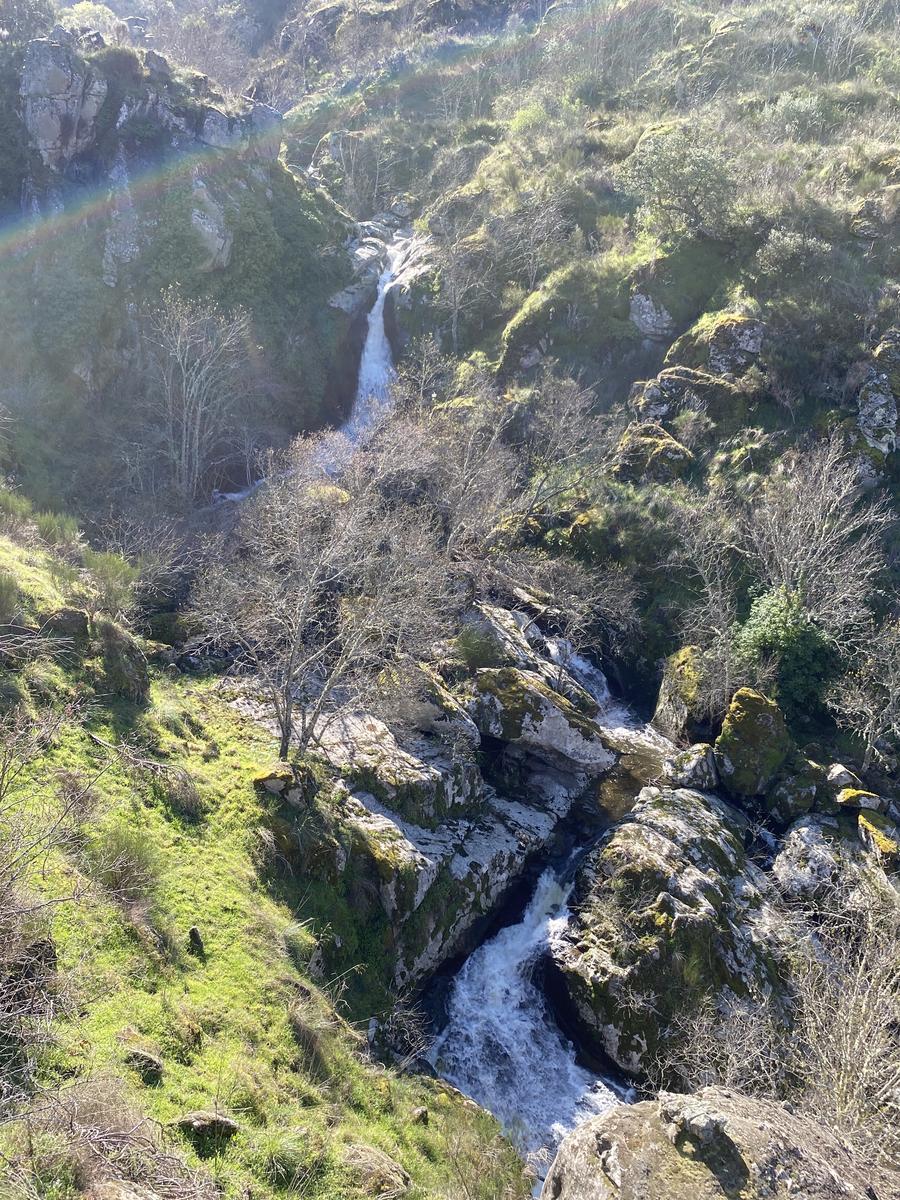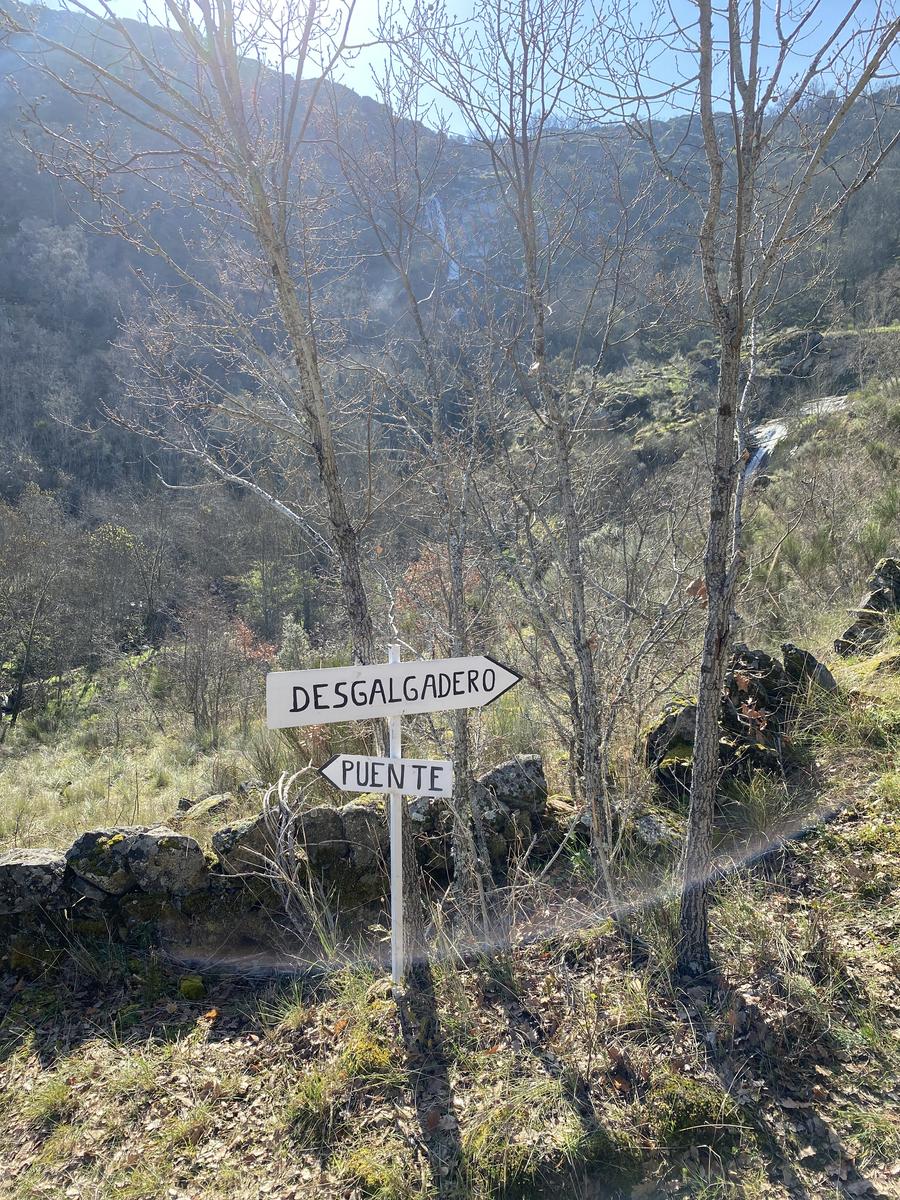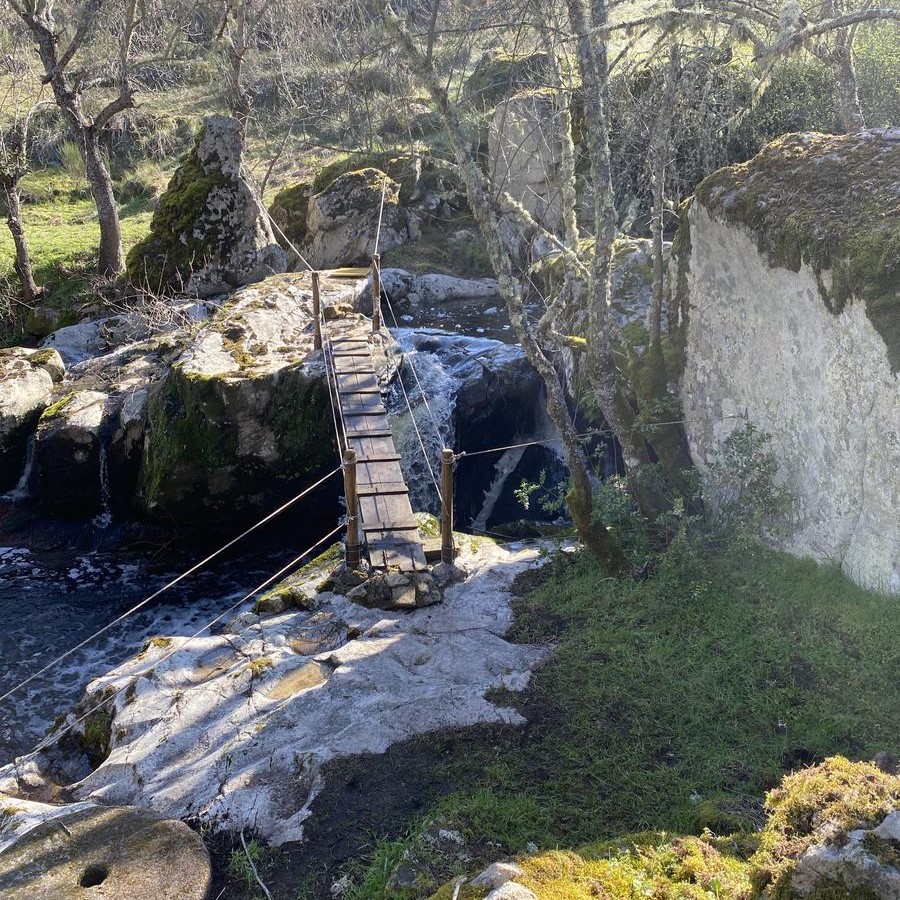Cascada del Desgalgadero: Location, how to get there, and what to see
Discover the Desgalgadero Waterfall in the Arribes del Duero, very close to Fermoselle. Route, access and tips.
If you are looking for a hidden corner, full of wild nature and serene beauty that leaves you speechless, the Desgalgadero Waterfall is that place that still escapes mass tourism. Located in the heart of the Arribes del Duero Natural Park, this natural gem is perfect for lovers of hiking, photography and charming rural getaways.
Why is the Desgalgadero Waterfall a hidden gem in the Arribes del Duero?
The sound of falling water, the freshness of the clean air and the immensity of the landscape make this waterfall one of Salamanca's best-kept secrets. Formed by the Pescadera stream and with an impressive drop during the months of highest flow, the Desgalgadero Waterfall is a natural spectacle that rewards those who dare to explore the less travelled paths.s.

Desgalgadero Waterfall. Image rights: Gelo61 via Wikiloc
Where is Desgalgadero Waterfall and how to find it
Desgalgadero Waterfall is located in the municipality of Villarino de los Aires, in the province of Salamanca, in the autonomous community of Castile and León. It forms part of the impressive natural environment of Arribes del Duero, one of the most spectacular and least known areas in Spain.
How to get to the Desgalgadero Waterfall
From Fermoselle, it is only a 25-minute drive. Ideal if you are staying at the Posada Doña Urraca, where you can also enjoy a typical meal before or after the route.
It is possible to drive to a small car park near the start of the trail.
The trail starts in Villarino de los Aires, where a circular route of approximately 10 km begins, crossing olive groves, vineyards and almond trees, with a cumulative elevation gain of 375 metres. The descent will take you to the foot of the waterfall, where the Pescadera and Rebollar streams form this wonderful waterfall.
Terrain type
At the start of the route, take a paved road towards Teso de San Cristóbal. Afterwards, the access combines sections of paved road and dirt tracks.
The trail has narrow sections and some inclines, especially in the final stretch towards the waterfall.
Signage
The first 3 km of the route are well signposted, making it easy to find your way to the waterfall.

Signposting for the Desgalgadero waterfall route. Image rights: Gelo61 via Wikiloc.
What to see and do at the Desgalgadero Waterfall
The route is perfect for those seeking a natural experience without crowds. There are different sections offering panoramic views and direct contact with the native flora.
With its crags, crystal-clear water and lush vegetation, the Desgalgadero Waterfall is a dream for photography enthusiasts. The best shots are taken in the morning or at sunset.
The area is home to species such as eagles, griffon vultures and black storks, as well as holm oaks, rockroses, almond trees and centuries-old olive trees. It is a true natural sanctuary.
The setting invites you to sit down, relax and simply listen to the sound of the water.
Points of interest along the way
- Ruined flour mill: Remains of an old water-powered mill, located near the waterfall.
- San Cristóbal viewpoint: Offers panoramic views and has a picnic area. It can be reached on foot or by car from the upper car park.
- Tormes Canyon: The route allows you to explore the canyon formed by the Tormes River, with breathtaking landscapes.
When to visit the Desgalgadero Waterfall according to the season
- Spring (March to May): The flow is greater due to snowmelt and rainfall. The whole area is green and in bloom. Ideal for seeing the waterfall at its best.
- Autumn (September to November): Warm colours, fewer visitors and pleasant weather.
- Summer: Although there is less water, it is a good time if you want to combine it with other activities in the area.
- Winter: Only recommended if weather conditions allow.
Practical tips for enjoying your excursion safely
Level of difficulty: Medium. There are some uneven sections, although they are accessible for people in good physical condition.
What to bring:
- Hiking boots or trainers with good soles
- Water and some food or fruit
- Sunscreen and a hat
- Camera or mobile phone with battery
- Appropriate clothing for the season
- Hiking poles (optional)

Bridge on the route to Desgalgadero Waterfall. Image rights: Gelo61 via Wikiloc.
Precautions:
- Do not get too close to the edge of the waterfall.
- Respect the local flora and fauna.
- Take your rubbish with you. Help preserve this unique environment.
Conclusion
The Desgalgadero Waterfall is not just a waterfall, it is an experience for the senses that combines landscape, tranquillity and adventure. And the best thing is that you can combine your visit with an unforgettable stay at the Posada Doña Urraca, where every detail is designed for the relaxation of the rural traveller.
Frequently asked questions before visiting Desgalgadero Waterfall
Can I camp in the area?
There is no designated camping area. We recommend returning to Villarino or staying in Fermoselle.
Are there public toilets?
No. This is a nature trail with no infrastructure.
Is it suitable for children?
Yes, as long as they are used to walking and the necessary precautions are taken.
Where can I eat or stay nearby?
In Fermoselle, just 25 minutes away, you will find the Posada Doña Urraca, a charming guesthouse and restaurant offering traditional cuisine made with local produce.

